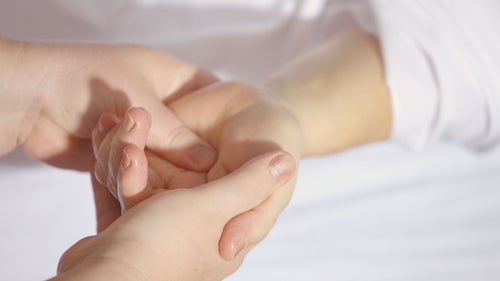Why do my hands get so dry after washing and disinfecting?
The reason your hands get so dry is that soap and disinfectants not only effectively kill unwanted bacteria and viruses that are on your hands, they also kill the important and good bacteria that you naturally have on your skin. The thousands of bacteria we have on your skin are important because they provide and bind moisture. These good remedies are simply that the skin becomes dry. In addition, lots of soaps and disinfectants also destroy the fats that we have naturally in your skin. When your important fat layer – which protects and helps the skin retain essential moisture – deteriorates, your hands become dry.
How can I heal my hands again?
When you wash your hands often and use hand sanitizer, you need to use a good hand cream. If you don't, you could potentially develop cracks where bacteria can enter and, in the worst case scenario, cause an infection.
Of course, it is best to start with preventive care to avoid getting very dry hands. But if it's important that you start using a generous amount of hand cream after every hand wash and after every time you use hand sanitizer.
How do I find a good hand cream?
What you need is a very rich, oily cream with emollients that gives your hands a protective layer and stops the water from evaporating. We also need to add moisture, the cream must contain humectants that sink into the top layer of the skin and bind the moisture there.
To find a hand cream that contains effective softening and moisturizing agents, it is important to read the ingredient list (INCI) carefully. Here are some golden rules to follow:
- Less is more – look for a minimalist ingredient list. A few effective ingredients are better than a parade of extracts, active substances and so on. These ingredients may sound cool, but your hands don't care. A maximum of 20 or so base ingredients is a good rule of thumb.
- Avoid perfumed products, even those with essential oils. Dry and cracked hands are particularly sensitive to such ingredients which can only further irritate the skin.
- Avoid can packaging. Hand creams that come in cans require more preservatives because you put your fingers in them, maybe daily, and preservatives are irritating to the skin. Look for pumps or hoses instead.
What ingredients should I look for?
To reduce water evaporation from the skin and retain moisture in the skin, an occlusive (barrier-forming) ingredient is required. It can be oils or other fats such as butter or wax. Some oils to look for in the ingredient list (INCI) are Rapeseed oil and other vegetable oils, Shea butter and other butters, waxes, mineral oils and silicones. Mineral oils and silicones get a lot of criticism for not being biodegradable and therefore not the best for the environment, but they are cheap and very effective for dry skin and are therefore widely used by manufacturers. You will find mineral oils in the ingredient list such as Mineral Oil, Petrolatum, Paraffin and Vaseline. Silicones in the ingredients list are called Dimethicone or Siloxane (and all others ending in -cone and -oxane).











